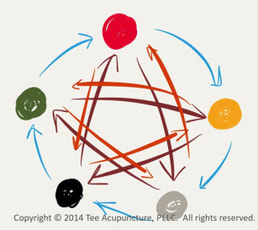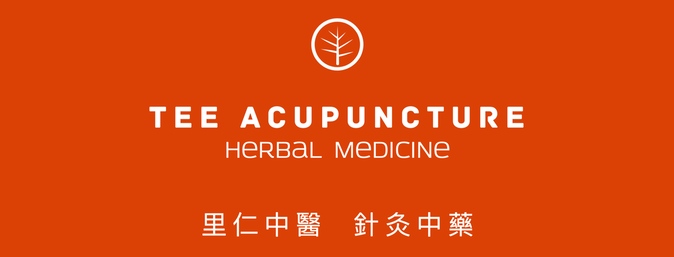 While I was attending my Master's degree in Acupuncture, I took a course named "#TCM #Psychology". The course was very interesting and I enjoyed it. During the course, our professor explained that people's personalities and faces could be categorized into "Five Phases" 五行學說 and I was very much amazed to learn that. The theory of Five Phases, like the theory of Yin-Yang, defines the foundations of Traditional Chinese Medicine (TCM). Our Chinese ancestors believed that everything in this universe is closely related to the environment and throughout the long-term observations our ancestors put together the theory of Five Phases, and associated human beings including their body structures, personalities, health conditions, birth dates, etc. into the Five Phases. Here let's discuss some of the theory. “Wu Xing Xue Shuo” 五行學說, which is also known as the “Five Phase Theory”, is one of the most fundamental theories and traditional philosophies that the ancient Chinese ancestors discovered and developed through many generations with lifelong observation of the universe, nature and human being. In 350-270 B.C., Zhou Yan initiated this theory along with the Yin-Yang theory. The five phases are Wood 木, Fire 火, Earth 土, Metal 金, and Water 水. In the Five Phase theory, there are an inter-promoting relationships between the elements. For example, Metal (Lung) is the mother of Water (Kidney), and Water is the son of Metal while Metal is the son of Earth (Spleen). In addition, there are also controlling relationships. For example, Metal controls Wood (Liver) but Metal is controlled by Fire (Heart). Each of these five phases has its unique characteristics, related functions and qualities, and together they have interrelationships such as generating, controlling, over-acting or over-controlling, and insulting each other (as shown in the diagram) and some of which are indicated above. Different colors are also categorized into these Five Phases. The color black belongs to Water, the color green to Wood, the color red to Fire, the color yellow to Earth, and the color white (gray here) to Metal. All phenomena in this world and in the universe can be explained and categorized within these five phases or elements, and all things are considered manifestations of these five phases. However, the meaning of the Five Phases theory is far beyond than just the five basic elements indicated above. One should ascertain that these five phases are not only five basic elements, but they are also five dynamic, interchangeable, and interrelated systems. These elements have interrelationships as mentioned above and are often used in medicinal references and the organ systems when performing a syndrome analysis and diagnosis, as well as treatment principles. The philosophical theory of Five Phases has been widely used in traditional Chinese medicine to describe the medicinal influence in human physiology, pathology, psychology, diagnosis, treatment, and herbology. However, the bottom line and main key is still “balance.” The traditional Chinese medicine mainly emphasizes on the holistic approach and the balance of Yin and Yang which are the roots of all the phenomena in the universe. Anything in this world requires a balance. For example, balancing your car tires, balancing your business finance, balancing your daily nutritional diets, etc. So balance means nothing is too much or too little. The Chinese philosophies have always been centralized and emphasized on the notion of balance, hence, the Doctrine of Mean (“Zhong Yong Zhi Dao”,中庸之道). Therefore, the balance within the single element system itself should be maintained while the balance among the five element systems should also be kept in order to maintain a healthy human constitution both physiologically and psychologically. Any imbalance within its own system functions or between any of the five element systems could lead to many potential complications. In the first chapter of the Su Wen 素問 (Basic Questions) volume of Huang Di Nei Jing 黃帝內經 (the Yellow Emperor’s Inner Classics), Qi Bo 岐伯 states that “in the past, the people practiced Tao, the Way of Life. They understood the principle of balance as represented by the transformations of the energies of the universe. They formulated exercises to promote energy flow to harmonize them with the universe. They ate a balanced diet at regular times, arose and retired at regular hours, avoided overstressing their bodies and minds, and refrained from overindulgence of all kinds. They maintained well-being of body and mind; thus, it is not surprising that they lived over one hundred years of age.” From this passage, we see that the principle of balance is the key to a healthy constitution and it is very important to maintain a balanced lifestyle and mindset which perhaps is also the Doctrine of Mean of life in general.
0 Comments
Your comment will be posted after it is approved.
Leave a Reply. |
AuthorDr. Kang P. Tee is a Doctor of Acupuncture and Chinese Medicine, New York State Licensed Acupuncturist and Board Certified Diplomate of Acupuncture and Herbalist by NCCAOM. His interests include musculoskeletal Archives
May 2015
Categories |

 RSS Feed
RSS Feed